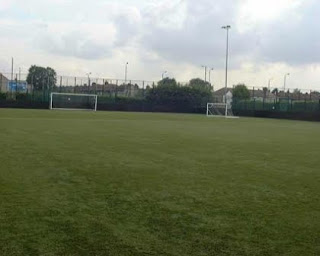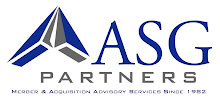Arsenal FC's Field Turf playing surface at Hale End in the UK
"For any of you that have been following the concerns raised about the tire crumbles in turf fields, the summary of EPA’s finding below should ease those concerns. It is still unwise to eat artificial turf, the infill, and tire crumbles, just like it is unwise to eat dirt and many other everyday items.The EPA, in a recent study, found that concentrations of chemicals in recycled tire material were below levels considered harmful. Recycled tire material, or “tire crumb,” is commonly used in synthetic turf sports fields and children’s playgrounds."
From the Lab Science News:
According to the EPA, public concerns have been raised in the past several years over the use of tire crumb materials, especially after high levels of lead were reported in some artificial turf fields. In 2009, the Synthetic Turf Council reported that artificial (synthetic) turf has been installed in approximately 4,500 fields, tracks and playgrounds.
EPA identified a number of chemicals that may be found in tires, although not all are contained in each tire:
• acetone • aniline • arsenic • barium • benzene • benzothiazole • cadmium • chloroethane • chromium
• cobalt • copper • halogenated flame retardants • isoprene • latex • lead • manganese • mercury • methyl ethyl ketone • methyl isobutyl ketone • naphthalene • nickel • nylon • phenol • pigments • polycyclic aromatic hydrocarbons • polyester • rayon • styrene butadiene • toluene • trichloroethylene
EPA formed a workgroup in 2008 to consider the threat of tire crumb health effects via inhalation, ingestion, or skin contact. Laboratory studies were conducted to consider the tire material content, off-gassing, and leaching characteristics. EPA then produced a 105-page document entitled “A Scoping-Level Field Monitoring Study of Synthetic Turf Fields and Playgrounds,” released in November 2009.
Study findings
• Particulate matter, metals and volatile organic compound (VOC) concentrations were measured in the air samples and compared with areas away from the turf fields (background levels). The levels found in air samples from the artificial turf were similar to background levels found in any local air samples. One VOC associated with tire crumb materials (methyl isobutyl ketone) was detected in the samples collected on one synthetic turf field but was not detected in the corresponding background sample.
• No tire-related fibers were observed in the air samples.
• All air concentrations of particulate matter and lead were well below levels of concern.
• More than 90 percent of the lead in the tire crumb material was tightly bound and unavailable for absorption by users of the turf fields.
• Zinc, which is a known additive in tires, was found in tire crumb samples. However, air and surface wipe monitoring levels of zinc were found to be below levels of concern.
• Total extractable metal concentrations from the infill, turf blade samples and tire crumb material varied widely in the samples collected both at a given site and between sites, so it could not be determined to be a function of the presence of crumb material.
• The average extractable lead concentrations for turf blade, tire crumb infill, and tire crumb rubber were low. Although there are no standards for lead in recycled tire material or synthetic turf, average concentrations were well below the EPA standard for lead in soil (400 part per million).
• Likewise, the average extractable lead concentrations for turf field wipe samples were low. Although there are no directly comparable standards, average concentrations were well below the EPA standard for lead in residential floor dust (40 micrograms per square foot).
The results from this study along with results from other studies conducted by Federal, State, and local organizations, such as the Consumer Product Safety Commission (CPSC) and the Agency for Toxic Substances and Disease Registry, will be considered at an EPA meeting planned for Spring 2010. This meeting will help to identify steps to address public questions regarding the safety of tire crumb infill in ball fields and playgrounds.
For more information, visit EPA’s website www.epa.gov/nerl/features/tire_crumbs.html










No comments:
Post a Comment